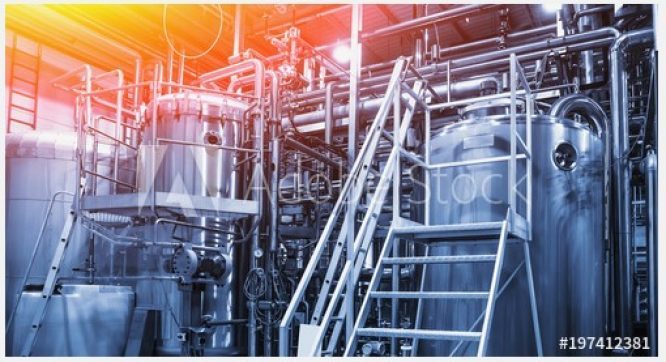Accurate, Reliable and Repeatable Tank Level Measurement Proven with 80GHz Technology
The South African consumer landscape has changed dramatically over the last decade. Characterised by a rapidly growing middle class, and an increase in demand for high quality consumer packaged goods (CPG). Coupled with stringent legal requirements for food safety, Food and Beverage Manufacturers are under tremendous pressure to optimise their processes to deliver high quality, cost-effective products to discerning customers. Customer centricity now dictates the nature of manufacturing, moving away from the traditional prescriptive mindset that dominated the industry.
A well-known South African beverage company with a long and successful history in the growth and development of the local dairy and fast-moving consumer goods (FMCG) industries, recently faced an engineering challenge in optimising their mixing process.
Their presence in the beverage sector has been entrenched by winning several taste and quality accolades, as well as being voted the most reputable company in South Africa a few years ago. With an enviable basket of established brands and a requirement for frequent change-overs, product losses were becoming both a financial burden and a looming impact to the environment.
Taking immense pride in ensuring that the ever-increasing costs associated with stringent safety and quality requirements, are not merely passed on to the consumer, this organisation drives process optimisation and resource savings as a corporate culture at their manufacturing facilities. The production facility’s Maintenance Manager deliberately focuses on improving the overall plant reliability without compromising on product quality. This is a key imperative for his beverage factory in the Food and Beverage Industry due to the stringent requirements related to food safety.
As a socially responsible organisation, meticulous detail to plant optimisation is not merely due to the focus on reducing factory losses but aims to limit the effects of Total Organic Carbon (TOC) and Chemical Oxygen Demand (COD) that impact our environment.
The performance of the existing level transmitters was unsatisfactory, requiring higher improved accuracy with a reliable and repeatable measurement from the new devices. This installation involved turbulence, tank intrusions, an agitator and a degree of foaming in a vessel with a conical base. The capacitance type probes did not measure accurately to the bottom of the mixing tanks, this resulted in product being left behind when transferring to the buffer tanks. The net effect of this measurement problem resulted in high product loss and high effluent costs.
Endress+Hauser was approached to support in this application with a trial unit along with other competing brands. This was an opportunity to showcase the unique performance capabilities of the 80GHz free space radar level transmitter from Endress+Hauser. The FMR62 was offered to the customer, and a defined assessment matrix was developed. Three test units different manufacturers were run on the mixing tanks from and assessed on the following criteria as determined by the customer:
- Process fit and integration
- Ease of use
- Service and support
- Performance
- Total cost of ownership
The solution provided by Endress+Hauser proved to be the best overall solution delivering the highest score in the above evaluation. The performance demonstrated by the unit allowed the customer to determine minimal levels that accumulated in the vessel via the sprayball during cleaning in place (CIP). This offered the customer a new degree of traceability and could view from a single trend if a CIP has been carried out between batches.
When reviewing the results post the trial, the factory’s Maintenance Manager emphasised that he was extremely impressed with Endress+Hauser’s ultrasonic level transmitter’s accuracy at low levels. His initial assumption was that the level transmitter was drifting at the zero point after the tank was emptied out. Upon closer inspection it became evident that the FMR 62 was detecting the residual from the sidewalls that was pooling in the vessel cone. None of the other trial devices had revealed this inherent process condition. He further commented that this was excellent accuracy in the most difficult part of the tank (cone). The accuracy delivered was better than he had hoped for and this could aid operators to ensure tanks are truly empty before starting a new batch. This positive feedback has resulted in the site planning a migration strategy for their mixing tanks that will leverage the technology benefits of the FMR62.
For more information, please contact:
Anban Pillai
Industry Manager – Food and Beverage
Anban.pillai@za.endress.com







